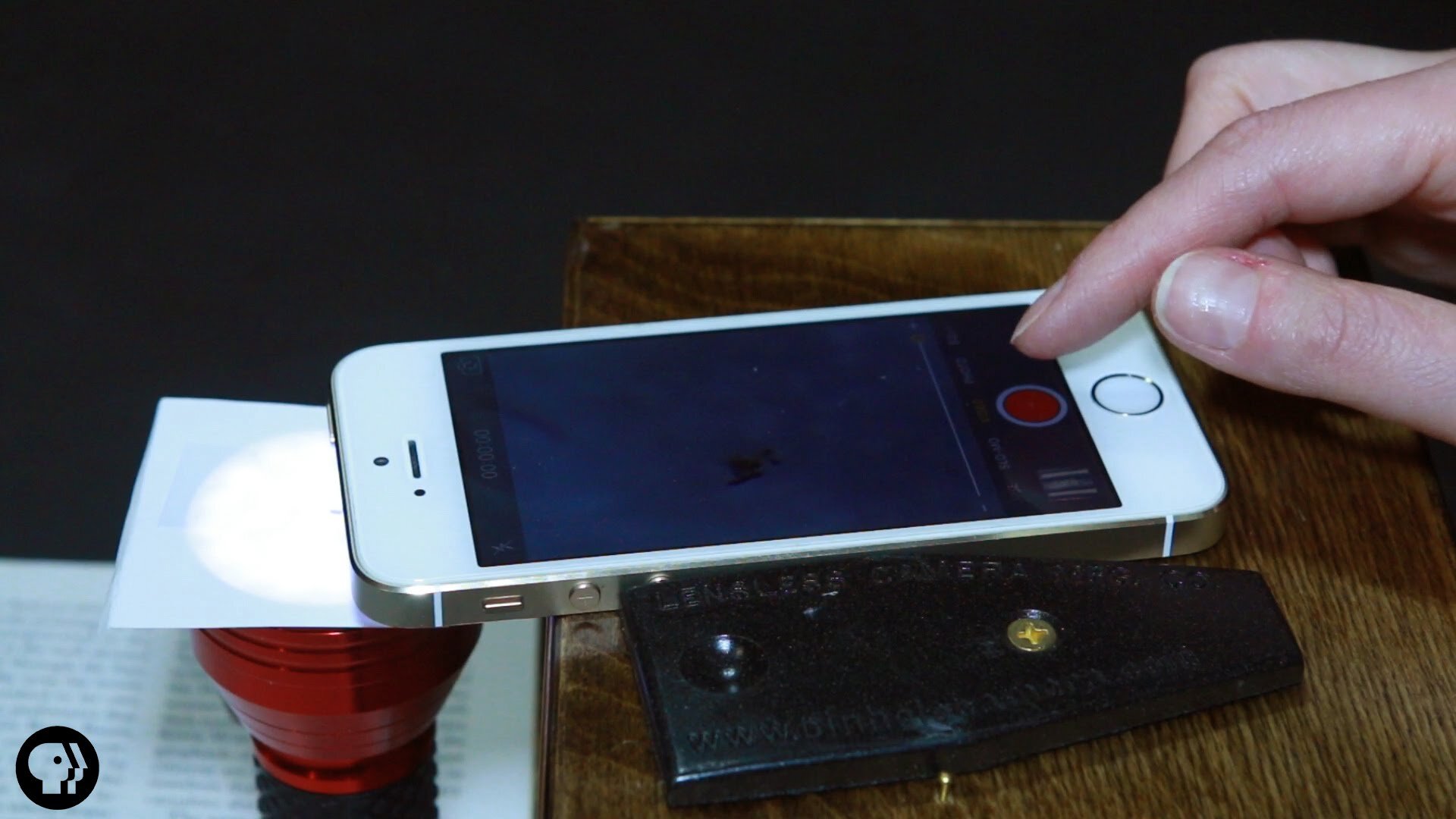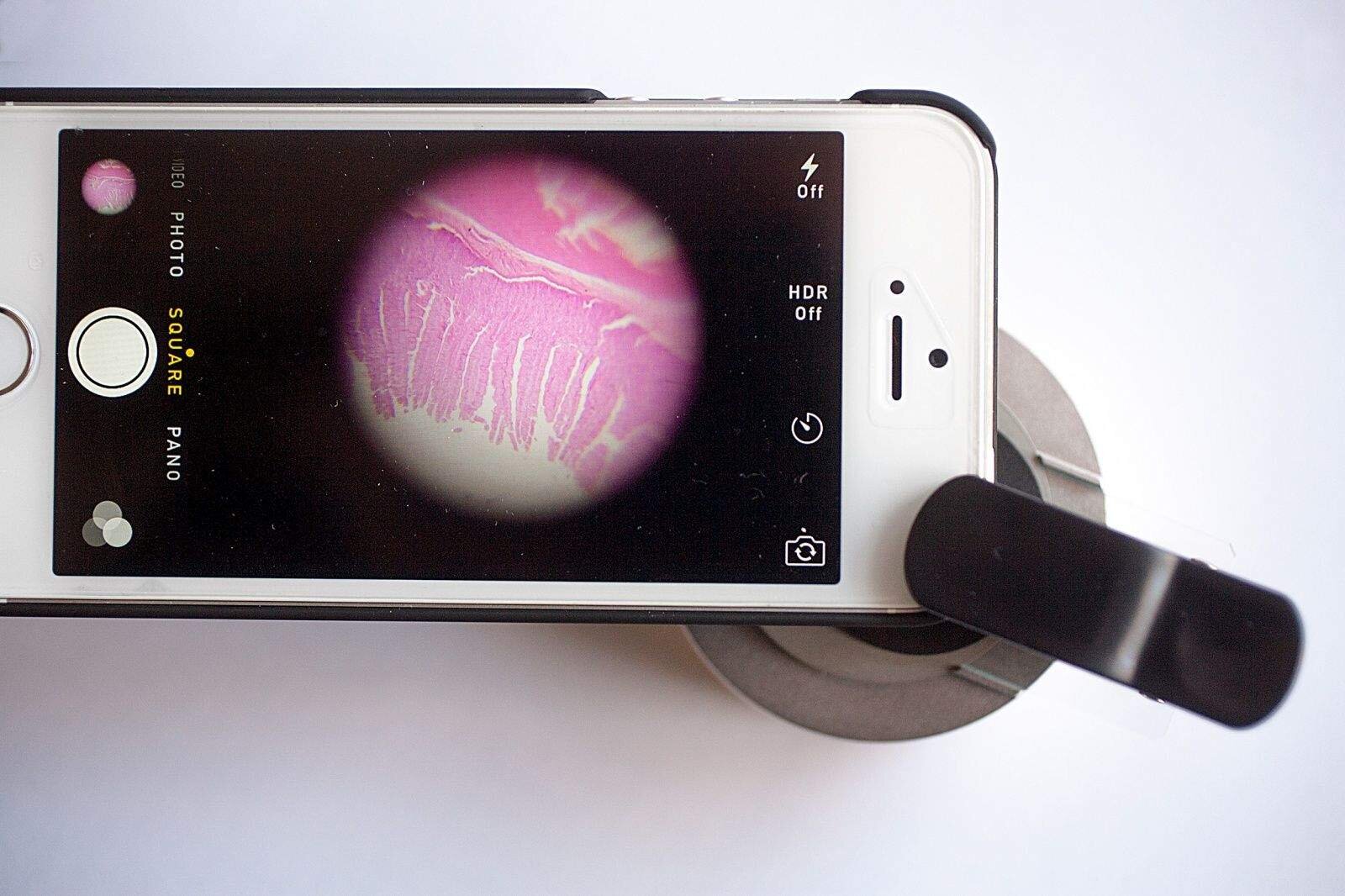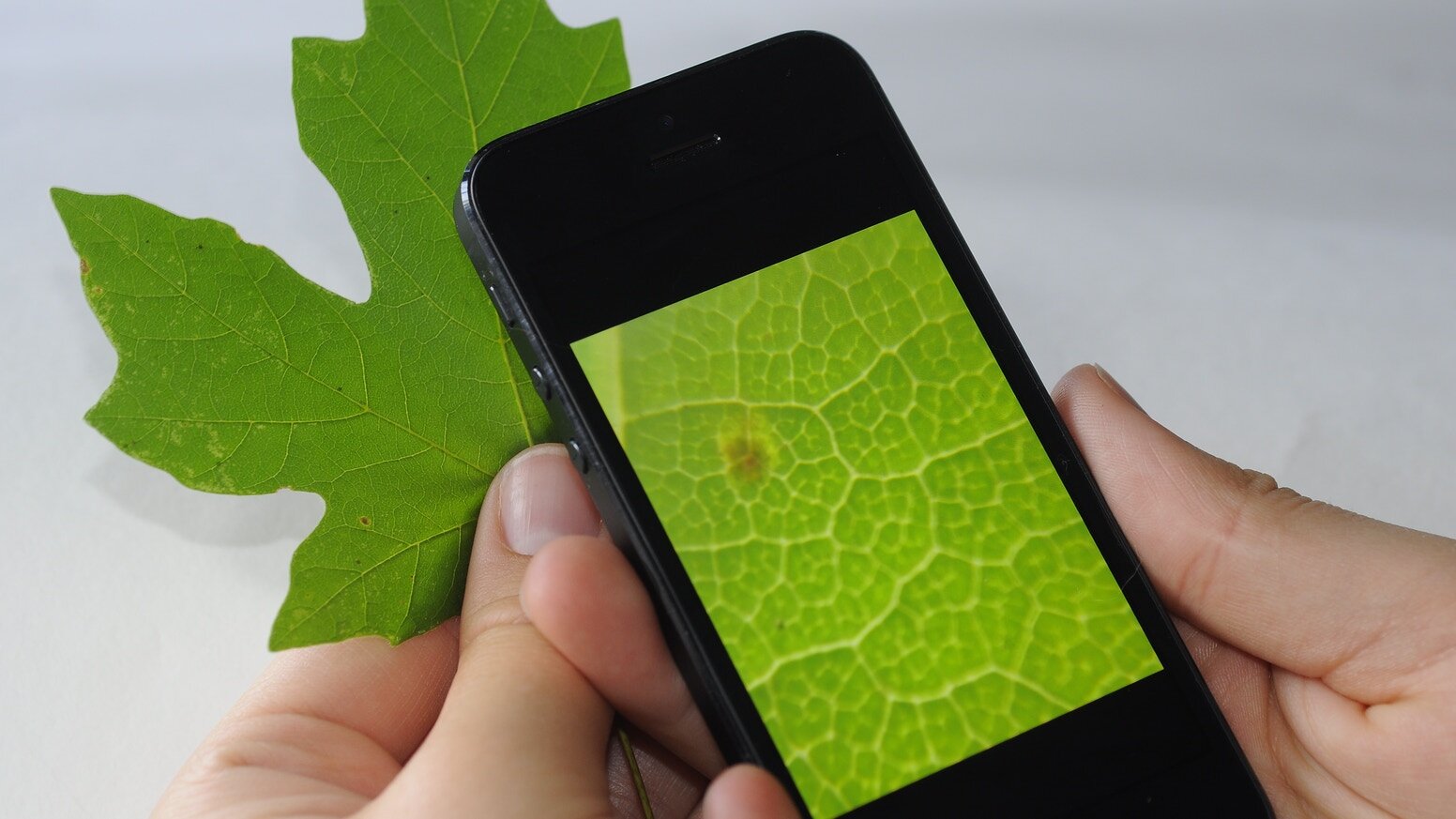Cellphone Lab
Cellphones are great for recording your favorite TikTok dances with friends and capturing unforgettable moments, but that same smartphone can also reveal a world of microscopic creatures missed with the naked eye!
Medical professionals even modify cellphones to help diagnose diseases like malaria and cholera in blood smears, making them valuable portable medical devices. Your smartphone was designed to be easy to operate, lightweight, and portable, and brings the microscopic world to your fingertips.
In this photography science project, you will build a simple and inexpensive cell phone microscope to explore the outdoors.
Tools
A smartphone
A laser pointer
Poster tack (also known as sticky tack)
A piece of paper (preferably tan paper with no lines)
A pencil and notepaper
Transparent plastic packaging for the slide cover (for example, the plastic cover from the sticky tack packaging or an old cell phone screen protector)
Scissors
Flashlight
Small bucket or Tupperware container
Mario Hole in the Sky: How a Chemist Saved Our Planet (optional reading)
Steps
Step 1: With adult supervision, carefully remove the lens out of the laser pointer. This is the only part of the laser pointer you need.
Step 2: Wrap a small piece of poster tack around the bottom edge of the lens and stick it over the camera on the backside of your phone. Be sure to put the lens convex (curved) side up. It should look like a little dome. Please note that this will only change your phone temporarily; the lens can be removed and will not damage the phone.
Step 3: Next, create a slide to hold whatever you want to examine under your smartphone microscope. Using transparent plastic packaging, make sure it fits on top of the paper and flashlight head evenly. You will also need a slide cover if your specimen is fluid or moves, such as water. Be sure to have a second piece of plastic packaging material to use as your slide cover. It will be placed on top of your specimen to keep it still. Note this works best with plastic that is not scratched.
Step 4: The final piece of a microscope is the light source, which helps to view whatever is on your slide. Place your flashlight facing upwards and then put a small piece of paper flat over the head and secure it with tape. You will put your slide from Step 3 on this piece of paper so when you turn the flashlight on, the light will shine through the paper and up through your slide. You’ve now built all the parts of a microscope, let’s test it!
Step 5: Think about what you would like to view under your cellphone microscope—a leaf, a piece of lettuce, a drop of water? Grab a leaf or a blade of grass and cut a small piece to place on your slide. Or take a small bucket to a nearby puddle or pond and collect a water sample. Place a drop of this water on your slide, don’t forget to put your slide cover on top to keep the water in one place. Then, turn on your flashlight and phone’s camera and set your slide on top of the paper, and explore! You might try examining the water from your pet’s water dish.
Step 6: Use your modified smartphone camera to observe the object on your slide. Take lots of photos and think about how the distance between your phone and flashlight affects the quality of your pictures. Do you get better photos with the camera’s flash on or off? It may take a few tries to focus your homemade microscope on your slide contents. Use your pencil and notepaper to record what you see on your slide, and draw the different organisms and organic matter you find. For reference, watch the short video shared at the bottom of the activity to see what you might find in pond water or the images at the top of this activity to see the pore of a leaf. Also, don’t forget to share your images on social media using the #SubaruLovesLearning or send us an email.
To Do or Learn More:
Build a slightly more sturdy cellphone microscope, create the clip-on microscope version, or use this NASA activity to build a larger microscope.
Continue to perfect the images you are taking by using our Picture Perfect Activity. Learn how to select what to focus on, the angle of the shot, and what story you hope to tell through the image.
Learn more about Mario Molina with The Nobel Prize Biography and the Science History Institute’s Historical Biography.
Add Mario and the Hole in the Sky: How a Chemist Saved Our Planet, by Elizabeth Rusch and illustrated by Teresa Martinez, to your reading collection. This 2021 AAAS/Subaru Book Prize Winner for Children’s Science Picture Book explores the importance of a microscope for a kid’s science curiosity. Para el libro español, haga clic aquí.
If you cannot find the book near you, use this Read-A-Loud YouTube video, Churchill Librarian Cherie Yanek reads aloud "Mario and the Hole the Sky.”
Pond water microorganisms imaged with a mobile phone microscope!
This activity was inspired by the 2021 AAAS/Subaru Book Prize Winner for Children’s Science Picture Book, Mario Hole in the Sky: How a Chemist Saved our Planet.



